Marlborough Loadstar Makes the Memories
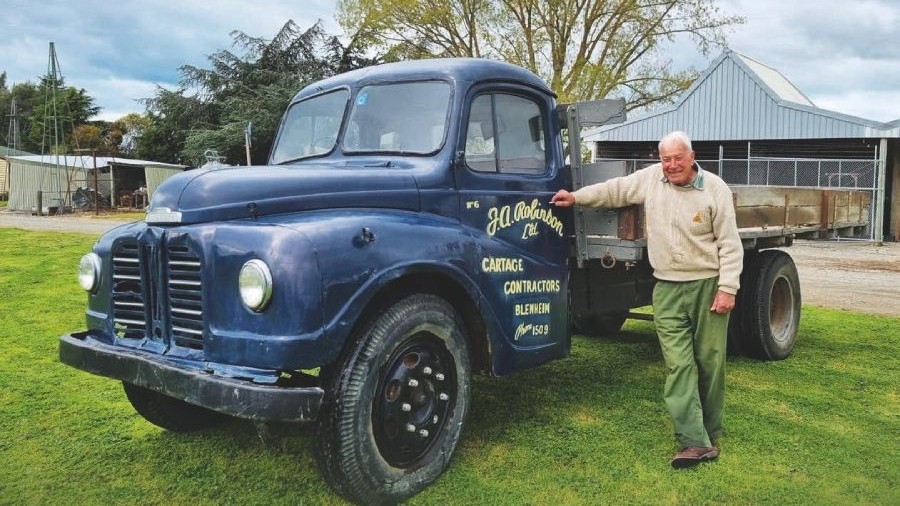
John Simmons from Blenheim is a regular reader of New Zealand Trucking magazine and thought we’d be interested in a 1952 Austin Loadstar – No.6 – of which he is now the self- appointed custodian.
The 83-year-old’s first job was working at the Blenheim Butter Factory, making butter.
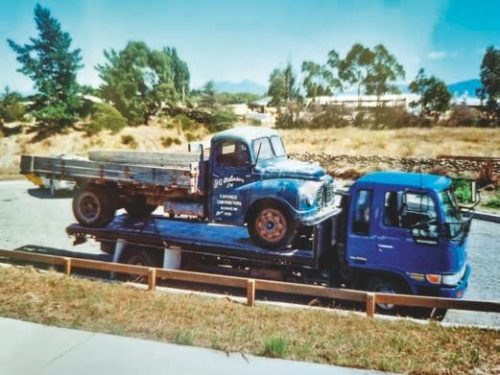
“The trucks would come in with the cream on them, and while the drivers were inside, I’d rush out and jump in the one that had backed in first and shift it and back in the other one. I got my heavy traffic licence when I was 18 in one of the butter factory trucks, an old OLB Bedford with a crash gearbox.”
The Molesworth Station mail truck used to come in every Tuesday and Friday, and John says he’d stop and have a yarn to the driver, who he knew.
“The boss called me into the office one day and said he was horribly disappointed in me; all I thought of was trucks. So I left and started driving them.”
At 19, John went to work for general carriers J.A. (Joe) Robinson, who serviced Marlborough. “They carted
just about anything, including boats.
They launched a few boats from Picton, and I’ve got a photo of one of the trucks towing a fairly big launch down to the water.
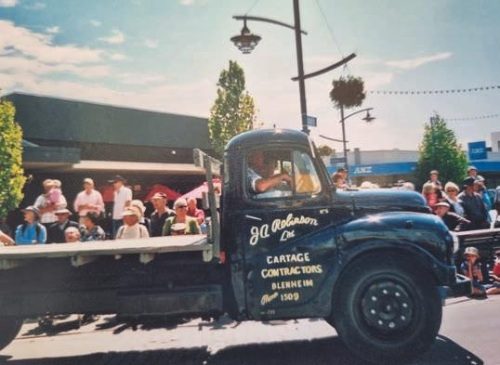
Joe also had a registered horse float that took about six or seven horses. It was only on a four-wheeler truck, the same size as No.6, only a flat deck, and it was properly partitioned off.”
Although Joe had bought No.6 second-hand, he added an S Bedford to the fleet, followed by three new Loadstars, Nos.8, 9 and 10. He also purchased a Leyland Comet 90 with a five-speed gearbox and two-speed diff.
“I went on No.10 and drove that for 12 months, then I went on the Leyland, and I drove that for 10 or 11 years. That was a good truck,” says John.
“After all the Austins, Joe bought a couple of Butterbox Internationals. I got one, and that was the first brand new truck I ever had.” Joe had five 702 Austins that gave great service, and three F.J.K. Austins, then went to the Inters.
In those days, rabbits were a problem for Molesworth Station and although there were rabbit boards, Molesworth carried out its own pest control using poisoned carrots.
One of John’s first jobs, when he started at Robinsons in 1958, was to assist with carting 700-tonne of carrots to Molesworth Station’s airstrip.
“After that, it was 300, then 400 tonnes every year. It was a good winter job because there wasn’t much doing around Marlborough in the winter.
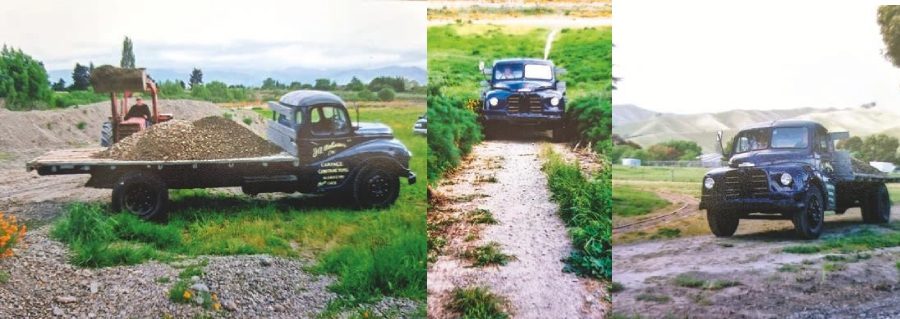
“The first carrots weren’t poisoned. They would feed two lots of carrots and then poison the next lot. They were carted in bags to the station, then diced, and we would fill the airstrip with carrots and then the woolshed. They were all hand-loaded off the ground.”
Another job was to cart the bulls out to the back of Molesworth Station every year. “Imagine nine bulls on a two-axle truck – the Leyland had a 20-foot deck with a 22-foot cattle crate on it – and hard on the brakes all the way down Wards Pass, really hard. It was good when I got to the bottom.”
John worked for J.A. Robinson for about 15 years and says when he left the company, it had 15 trucks and about seven or eight drivers. He then got a job driving trucks for Master Butchers.
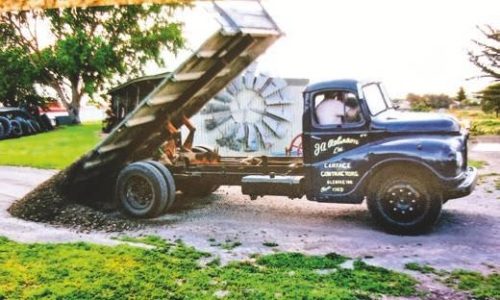
“To start with, I went on a TK Bedford that had been through the mill with the previous driver, and then they got the International 1950 A. It had the V8 motor and idled on four cylinders, cutting in on the other ones at about 1600 revs. But I never drove it below 2000 revs, so that didn’t matter. I put that around the clock about three and a half times, and they did the motor up on it after that. It needed the injectors done and an oil leak fixed, but they’d saved that much money because that truck cost so little to run over the years, so they spent money getting the motor done up, but they didn’t need to.”
John says he thinks the 1950A was about a 1973, and it was one of the clean air motors. “When you started it in the morning, there was a cloud of black smoke, but that’s all you saw all day. Coming up that steepest hill, which is the Lion’s Back, south of Seddon, in second gear, you couldn’t see anything at all She was just clean once she’d got rid of that black smoke in the morning. It had a 10-speed Roadranger gearbox. I think the best truck I drove was that 1950A – that was a damned nice truck.”
John stayed at Master Butchers for 15 years and says he spent the rest of his life driving trucks on and off, aside from 17 years when he and his late wife took over part of a family farm in the foothills to the south of Blenheim.
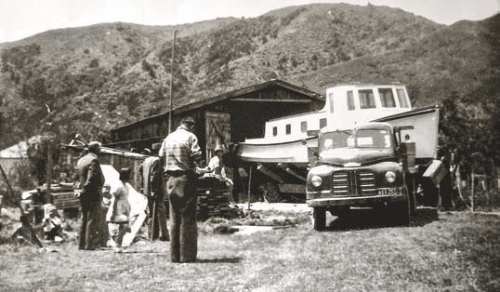 “We did a bit of everything. We had sheep and cattle, and we always had a paddock of grain in every year.”
“We did a bit of everything. We had sheep and cattle, and we always had a paddock of grain in every year.”
In 1967, John says No.6 went to Molesworth Station and remained there indefinitely. “We know it was in 1967 because the original sticker is on the windscreen still, it was never registered again. It had become sort of obsolete for what Joe was doing – we were mainly into five-yard tip trucks then, and No.6 was a four-yard. They used it to ferry the carrots from the woolshed over to the airstrip as they needed them. And if they couldn’t dig down there in Blenheim, there was a bit of a buffer for them to keep going. The truck was also used for a bit of gravel cartage.”
The truck is now at the Marlborough Vintage Farm Machinery Museum at Brayshaw Park in Blenheim, but there is quite a story to how it ended up there.
“When Joe sold out to he gave that truck to Bill Chisholm, and Bill gave it to his daughter Ann. Ann gave it to Pete Croft, who manages the Molesworth farm in Hanmer, with the proviso that it went to the Steam Museum in Wakefield, Nelson. I rang Molesworth to see if I could get hold of it, and the manager said, ‘No, Pete Croft owns it, ring him’. So, I got his number and rang him, and he said it had to go to the Steam Museum. I said, ‘That’s what I want it for’ and he told me to come and get it.”
John hired a truck, and he and his brother Allan headed to Hanmer. When they arrived, Pete started the truck in the shed without any trouble and drove it onto the back of the truck for the trip back to Blenheim.
“The gearbox was buggered in it, and the motor was only running on about two cylinders. We unloaded it at my yard here, and the Steam Museum brought the pieces up, and I fixed the gearbox. Finally, after about 12 months, it went to Wakefield. One of the Steam Museum members, Tony Hanson, grew up in Blenheim and he said, ‘It doesn’t belong here, it belongs in Blenheim’, and he engineered getting it back here.”
John says at the time, he had a Hino that he’d bought off his son Tony when he owned Early Bird Transport.
“I went over and put the Loadstar on the back and drove it straight up to Brayshaw Park.” As mentioned, John had restored the gearbox before it went to the Steam Museum, touched since it was replaced before it went to Molesworth in 1967.
“When I started at Robinsons, that motor was sitting in the shed, wrapped in a great big plastic bag. Just the motor packed up in the original truck, they put that in it. It’s a four-litre Austin motor, and the truck has a four-speed crash gearbox.

“That motor is still in it now. It’s got liners in it, which was unusual for those days – Engine Reconditioners in Blenheim bored it out and it back, the motor was still huffing and chuffing. I started to take the head off it and when I dropped the bolt out down to the brake booster, it fell over and I thought, ‘Well, it shouldn’t have done that’. It had come off the brake booster and that’s why it was missing all the time. I took the head off it and gave it a valve grind. I put a new hose back on it and I clamped it on both ends.”
John says the engine runs okay, but it tends to oil the plugs. “That’s because it’s been sucking that dust in for years and it buggered the motor up, so it’s probably only running on two cylinders. If you clean the plugs up, she runs on six for a while.”
The Loadstar still gets used now and then, and when we interviewed John, it had a load of wood on the back.
“She hasn’t fully retired. I’ve got a battery in it at the moment, and I’ll be bringing that load of wood up to the shed so we can split it. We’ve also been getting a bit of gravel out of the river if we can get down there.”
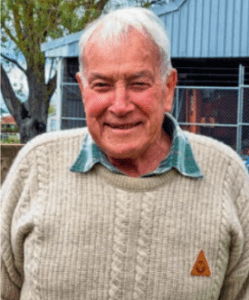
John says Marlborough Vintage Farm Machinery at Brayshaw Park has one of the best collections of tractors in New Zealand. “Along with a lot of stuff that we will never get around to restoring because none of us is getting any younger! “We have a former priest, John Neal, who is a Caterpillar man. He’s restored dozers up there, including a little Cat 15, and he had every last nut and bolt off it.
He does a marvellous job, strips everything right down, all the old paint. He did his service at Marlborough Tractor Services that used to do Caterpillars here in Blenheim.
“We’ve just had a D2 donated, and we also have a D4 that we’ve been given, and the people who owned it are paying for the restoration.” John’s three sons have all driven trucks at some point.
The eldest, Johnny, initially did a joinery course but went on to drive milk tankers. Tony worked for Riverlands Meat before buying his own truck and working as an owner-driver for Jim Barker at Otorohanga Transport.
He then bought Early Bird Transport in Nelson. After he sold that, he went to Heagney Brothers for a while and then to Stocklines driving one of its trucks.
Kenny, John’s youngest son, has driven trucks for many years. He now drives the UD GW26-460 Quon owned by Greg and Carol Robinson of Elite Excavators that was the New Zealand Trucking Top Truck in September 2021.
“You could say that driving is in our blood,” says John’s daughter Janice Thompsett. “Several of dad’s brothers drove, as did my three brothers, and I always dreamed of being a truck driver too but took up admin instead. My sister Kay now drives the bus that picks up employees of Dominion Salt, taking them to and from work out at Lake Grassmere.”
Read more
Number nine in sunshine
0 Comments4 Minutes
Survivor from the 60s
0 Comments18 Minutes
Closing time
0 Comments8 Minutes
The Hulk
0 Comments4 Minutes





